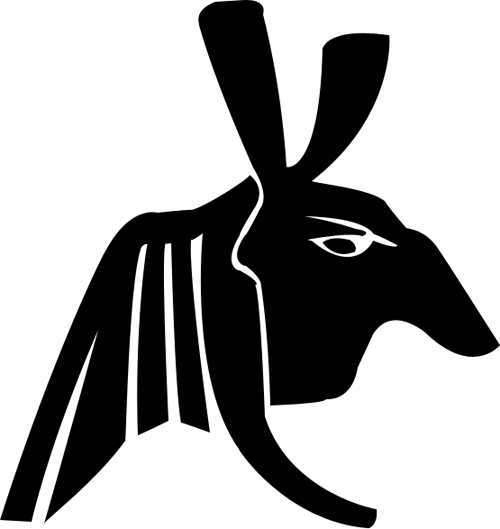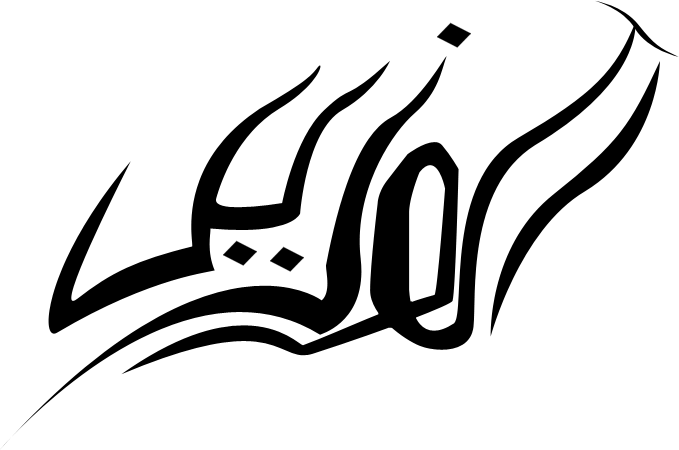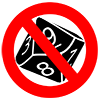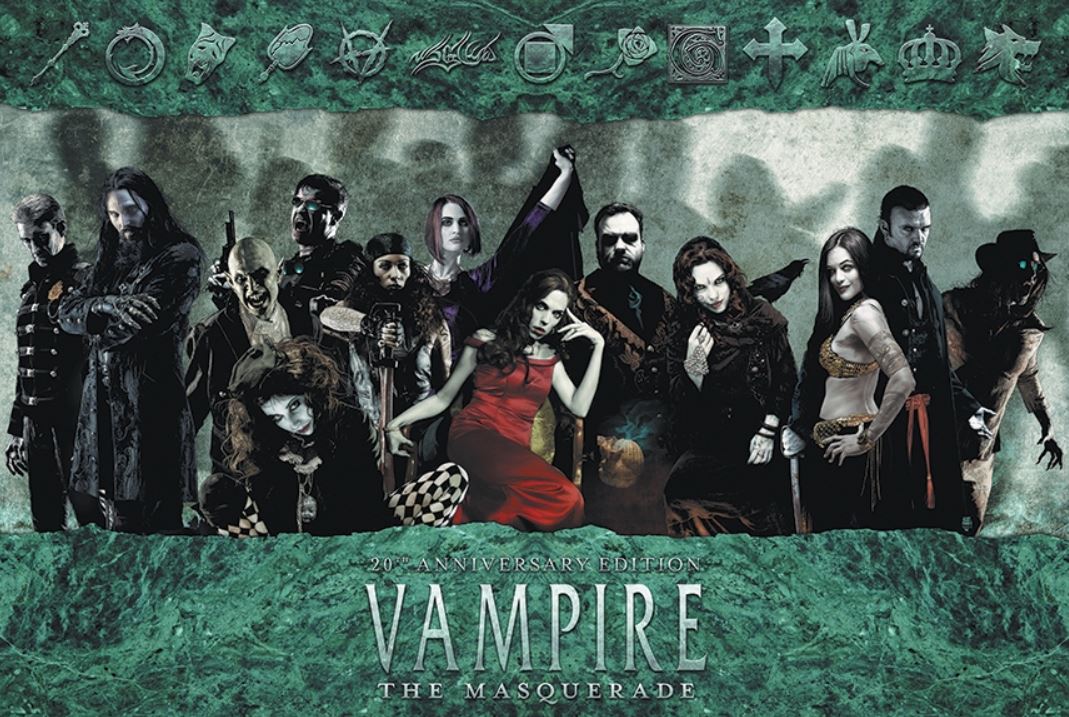Vampire is the game. I love it so much. I first picked up the book at Megazone in Falkirk, back in the late 90s. It immediately captured my imagination.

One of the things I loved most about it was the character creation process. The biggest decision in this part of the game was one’s choice of clan. Each clan represents a different archetype of Vampire and I find the political relationships between each clan to be fascinating.
Whilst there are many bloodlines and variants, for the purpose of a ranked list I am just going to focus on the core 13 clans. Also, although I love V5, the current edition of Vampire, I’m going to focus mostly on previous editions, where I really fell in love with the game, and with the clans. V5 does get a mention in a few entries, though!
Right, let’s get to the list:
13: Ravnos

Ravnos have always been somewhat problematic. They were pretty iffy in early editions, before being a bit better in Revised, and worse again in V20. In V5 they are… ok. They’re better conceptually, but don’t quite make sense mechanically for me. Frankly, they started off as caricatures of the Romani people.
In V5 they are better written in some ways. The stereotypes of travelling communities have been written out and clans are generally less monoethnic, but I really dislike their new bane; that they suffer as though from the sun’s light if they sleep in the same place twice in seven days. I get that the writers were keen to emphasise that they are a nomadic clan, but it feels a bit much to me. I do like their compulsion though, drawing them ever closer to danger. That works!
12: The Followers of Set

The Setites are convinced that their founder was none other than Set, an Egyptian god of war, chaos, and storms. The imagery of the clan is quite different to all of the others, being rooted firmly in that of ancient Egypt. They also have a definite, slick look to them. The snake imagery ties in well with this clan of figurative snakes who slither through the concrete jungles of the world to offer temptation. With this angle in mind, I feel that these Kindred often work better as antagonists than as player characters.
11: Gangrel

The Gangrel are a feral bunch. They rarely concern themselves with the complicated web of politics at the heart of Kindred society. I have mixed feelings about this. As a player, I love the political aspects of Vampire: the Masquerade. It’s why I play. It’s what I thrive on. On the other hand, as a storyteller, it’s useful to have characters who disregard that structure and act unencumbered by protocol and political maneuvering. It opens up a lot of options.
Mechanically, the Gangrel can be pretty interesting. Their use of animalism gives them an understanding of their inner beast that eludes many other Kindred. This combines nicely with the toughness afforded by their fortitude and the cool stuff they can do with protean. Protean can give all sorts of awesome effects, from animalistic features and darkvision, through to full-on transformation into animals and clouds of mist. They’re not the clan for me, but I can appreciate it when something is just really cool.
10. Giovanni

The Giovanni are necromancers with a major mafia vibe, but the thing that sets them apart from other clans is, ultimately, that they are a family. Other clans have familial bonds, but the Giovanni are literally siblings and cousins. You grew up with your fellow and Kindred as… well, kindred. That comes with downsides, of course. If you cross the family, you will be lucky to be killed. More likely you will be horribly tortured. Forever.
Mechanically, Necromancy was the defining discipline of this clan (replaced by Oblivion in V5). There are a number of different paths that can be followed to give some different flavours of Necromancy, with the Bone Path being the corpse-raising necromancer that most people would imagine. This becomes particularly interesting at higher levels, where the player can start to move souls between bodies. There are some other really cool paths. The Nightshade Path brings in some plant-based magic, and Grave’s Decay allows you to channel your magic into some real body horror.
9. Tzimisce

I’ve never played a Tzimisce as a player character, and I likely never will. I’ve used them a fair bit as NPCs when running games, though. These characters are so fundamentally deranged and often very secluded in comparison to the kindred of the other clans. They seem so alien, even among other vampires, and it can be interesting to examine how they interact with both mortal and kindred society.
Their signiture power, Vicissitude, is the art of flesh crafting. That has huge and obvious potential for classic body horror, and as an outlet for a particularly dark form of creativity.
Although this is a clan that wholeheartedly embraces their own monstrous nature, players and storytellers should be wary of turning them into melodramatic villains. They still have nuanced motivations and experience as much desire and fear as any other vampire.
8. Malkavian

As a clan, the Malkavians are often misunderstood by players. Given that their clan weakness is essentially a pronounced mental illness, this isn’t hugely surprising, as these illnesses can often be misunderstood. Bad Malkavian players create characters who are very random. They are mad, but they are not random. What I do may not make sense to you, and can often not entirely make sense to me, but I am doing this for a reason. I am not doing this just because.
Something also worth considering is that madness isn’t something laughable. It’s terrifying. If Vampire is a game of personal horror, then a well-played Malkavian is far creepier than a body-horror-orientated Tzimisce could ever be.
There is so much potential in a Malkavian character, and they can be so interesting in their motivations and outlook. Mechanically, they also have some very fun and potentially disruptive disciplines at their command.
7. Assamites

The Assamites (aka the Banu Haqim) are a clan of killers, and they are the masters of ambush and assassination. The clan is actually made up of three different castes, rather than existing as a single, cohesive entity. The most well-known caste is that of the Warrior, and most Banu Haqim that one encounters will be of the Warrior caste. Of the remaining two castes the Sorcerers are masters of blood sorcery whilst the Viziers are scholars and artisans. The clan is evidently somewhat more diverse than you might imagine from their reputation as a clan of assassins and diablarists.
I find the tripartite nature of the clan very interesting. The other thing I really love about the clan is the Tremere Blood Curse. The Banu Haqim were vitae-addicted diablarists who were a threat to the order imposed by the Camarilla. Once their secret home at Alamut was discovered, the Assamites submitted to the Camarilla, assenting to the Treaty of Tyre, and accepting the Tremere Blood Curse. This curse made it impossible for the Assamites to feed upon the vitae of other Kindred. This left the clan somewhat lost until the curse was eventually broken in 1998 with the awakening of Ur-Shulgi. I really love this whole storyline.
6. Toreador

Toreador are interesting and tagic and utterly, utterly terrifying. Their adoration of art and beauty goes hand in hand with their scary obsessions. I feel that Toreadors are the most flexible of Kindred, being at home on the street, in the boardroom, in a gallery, or in any crowd. A Toreador can be just about anything, revelling in the experience.
Despite this apparent ability to fit in, I’ve always liked the idea of the Toreador experience something of a spiral of perversity. As the Toreador ages and embraces their longing for beauty, this lust becomes more monstrous with each passing century as they grow weary of the things that used to intrigue them. They need more, and more, and more. Nothing satiates. Nothing satisfies, at least not for long. That, to me, is how a tragic Toreador should be played.
5. Ventrue

Ventrue, one imagines, have the best suits. Established Ventrue are powerful, both in position and in presence. With the signature disciplines of Presence and Domination, they are all about control. They control business. They control politics. They control mainstream Kindred society as a whole with their positions of leadership within the Camarilla. They are beings of refined tastes, with the clan flaw ensuring that they will only consume the blood of a human who meets their exacting specifications.
That said, it’s not the established Ventrue that I find interesting. It’s the up-and-comers. It’s the Kindred who are as hungry for power as they are for blood. They have something to prove and must match their wits against their betters to do it. In that situation, a victory is such sweet satisfaction. That’s a fantastic position to put a player into, and it’s why I love having a low-level Ventrue in a coterie.
4. Nosferatu

Unity through tragedy. Many of the other clans have subtle flaws that are not immediately apparent, but the Nosferatu must wear theirs openly. They are physically hideous and are outwardly terrifying to mortals. This has led to a culture of secrecy, as they hide away in the shadows. Concealed in darkness, they overhear conversations and trade in secrets. This is very compelling to me.
The Nosferatu, in spite of their common flaw, are surprisingly diverse. Certainly, I’ve played Nosferatu as both a player and storyteller, and have run them as downtrodden and oppressed, arch and villainous, quiet and contemplative, violent and impulsive, and secretive and unknowable. Some dwell in the sewers, whilst others exist at the fringes of society. The flexibility of the Nosferatu is not to be underestimated.
In my favourite campaign as a storyteller, I loved playing as our Nos NPC. I sold information to the player coterie at an apparent steal, only to call in my favours at the most inopportune moments to maximise my own power at the expense of this party of expendable kindred.
3. Lasombra

The Lasombra are similar to the Ventrue in a number of ways. Their love of control is a huge one, as well as their position within their sect. Whilst the Ventrue largely rule the Camarilla, the Lasombra occupy most positions of power within the Sabbat. Their clan disciplines feed into this focus on control, with an emphasis placed on imposing their will over those who are weaker than them. This perception of strength is also reflected in their own structure, which feels very much like a strict meritocracy.
A Kindred of the clan Lasombra should be ruthless and should demonstrate their contempt for human morality. They should be able to operate in isolation, rarely congregating en masse. They should exude menace and authority in (almost) equal measure. They should be seductive and deadly, able to go from icy and placid to fiery and wrathful in the blink of an eye, but never truly out of control.
2. Brujah

The Brujah Kindred of the modern nights are a brutish bunch. Many of them (not all, but many) appear to be mindless street toughs, though they are descended from a proud lineage of high-minded philosopher kings. Like the Toreador, they are a clan of passion, though directed in a different way. They currently identify most closely with the Anarchs, rejecting the rule of Camarilla.
Their signature disciplines include Celerity and Potence. These grant the Brujah incredible reflexes and strength, respectively. The more interesting clan discipline is that of Presence. I like to imagine a Brujah standing before a protesting or rioting crowd, using their power of presence to fire them up and point them in the right direction. It also harkens back somewhat to the clan’s history and their master of oratory, as well as physical domination.
1: Tremere

I hate the Tremere, and I love them for that. But then, doesn’t everyone hate the Tremere? Playing as a Tremere is pretty reassuring in that regard. Kindred of other clans might not always know where they stand with a particular individual or group. A Tremere can just assume that they are hated. It makes life simpler, doesn’t it?
As a player, I love the idea of Blood Magic. The Tremere were mages before they stole the curse of vampirism, so they have long been the master of magic. Blood Magic was very powerful in previous editions and, although weaker these days, is still a lot of fun in V5. There are so many cool spells and rituals, both subtle and ostentatious.
Pre-V5, the clan was also defined by structure. There was a rigid pyramid with the clan elders at the top, with blood bonds of loyalty guaranteeing the obedience of those below, all the way down to the humble neonate. I like this idea a lot, but I do also like the storyline in V5 where this organisation has been shattered with the destruction of the Vienna chantry. The Tremere of V5 is a clan in disarray, and that is interesting in itself. Playing Tremere is therefore quite different depending on the edition, which is also really cool.
I love the scheming that comes with the Tremere. I love the feeling of being a vampire, and a mage, and a cultist, and a scholar. There’s so much going on, and everyone is pitted against you. You are the clan that has literally come from nothing, brute-forcing your way into Kindred society and destroying another clan to take their place. You wield amazing powers and even humbled (for a time) a clan of assassins and diablarists.
I love the Tremere.


8 Comments